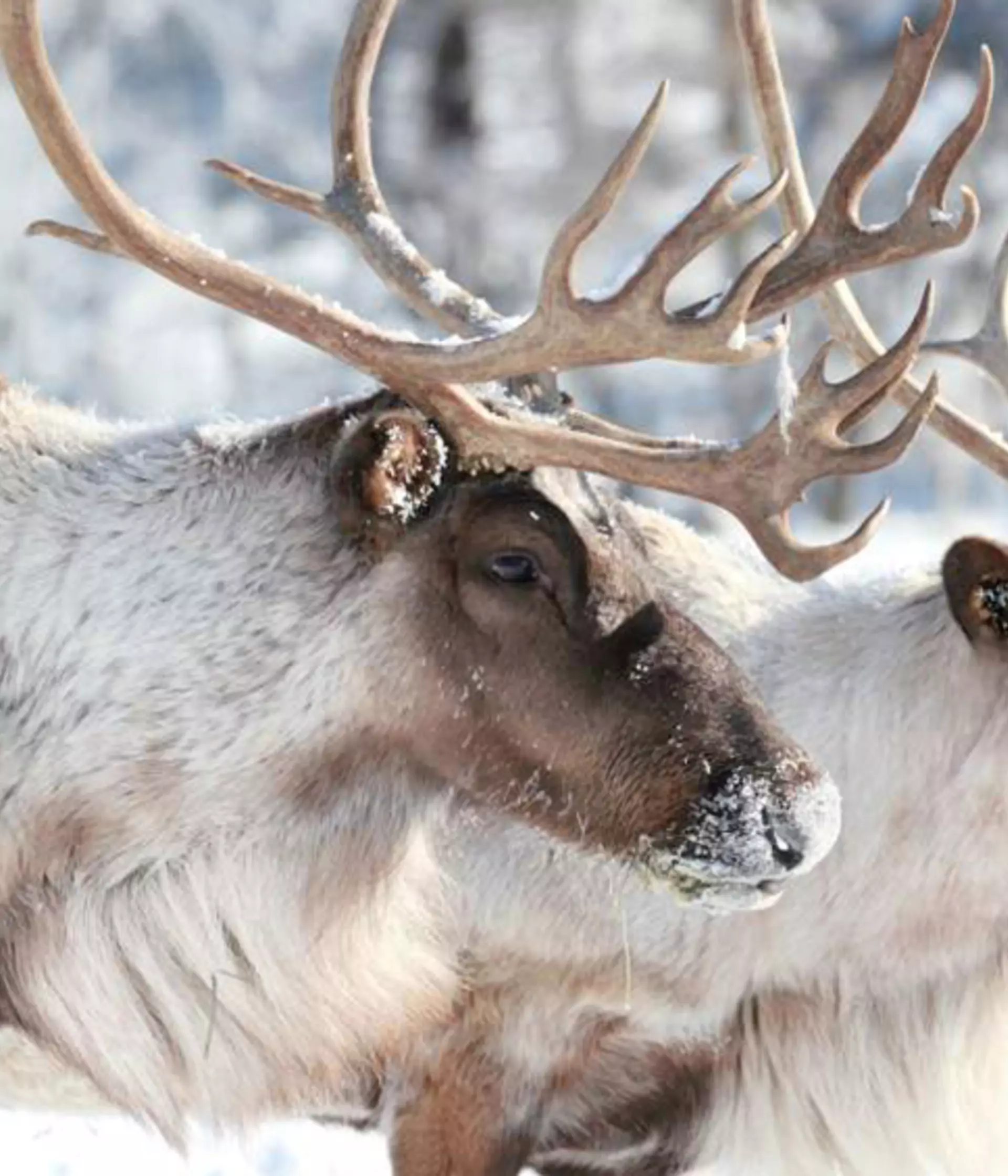Reindeer facts
At Whipsnade we currently have two male Forest reindeer - from an endangered species found living in Norway and Western Russia.
Where do reindeer live?
Reindeer aren’t only found in Lapland. Reindeer and caribou (as these animals are known in the US) are the same species. Widespread across the northern hemisphere, wild reindeer can be found in Alaska, Canada and the northernmost states of the US, as well as Russia, Greenland, Iceland, Mongolia, Norway and Finland.
Reindeer size
Reindeer subspecies range in size from the tiny Svalbard reindeer of the High Arctic, at around 60kg, to the forest-dwelling American caribou, which can weigh in at more than 300kg!
How do reindeer stay warm?
Reindeer live in some of the coldest places on Earth, so it’s no surprise that they have some pretty clever ways of keeping warm. In winter, they grow a thick coat with an outer layer composed of hollow hairs. That final layer traps the air and provides brilliant insulation. It’s so effective at keeping in heat, reindeer can reportedly even lie down in the snow and not cause it to melt.
Their skulls have a broader, flatter muzzle than most deer. This allows time for the air they breathe in to be warmed up by their sinuses. By the time the air hits their lungs, it’s still pretty cold by our standards, but it’s a lot warmer than it was. This helps them to maintain their core body temperature.
Reindeer in winter
In summer, they’ll spend up to 20 hours a day eating, and pretty much double their body weight in preparation for the colder months. They can live almost entirely off those fat stores during the winter months, eating only the odd bit of lichen or moss. They become very static in the winter, keeping still as much as possible to conserve precious energy. We see the same pattern in reindeer at the Zoo. They don’t exactly shut down, but they’re definitely on a go-slow.
Reindeer eyes change colour
It’s not just a reindeer’s weight that changes dramatically over the year. Even their eye colour shifts from yellow-green in summer to dark blue in winter. In the darker months, their eyes tend to be more sensitive to pick up the limited amount of light available. Their feet adapt too: in summer, the footpads on their wide, splayed hooves are thick and spongy, helping them keep their footing on soft tundra. In winter, the pad shrinks back, leaving a rim of hoof that grips the slippery snow and ice, and helps them dig for food.
Reindeer migration patterns
Some reindeer are migratory with herds – which can contain up to 500,000 animals – travelling some 5,000km each year in search of food and shelter (the longest journey undertaken by any land mammal).
One theory about why young reindeer retain a close link to their mothers, long after they’re weaned, is that it allows these routes to be passed on from generation to generation.
What do reindeer eat?
Reindeer make the most of every scrap of nutritious material available to them, from fresh green leaves and branches in the spring to lichen and mosses in winter. The challenge with our reindeer at the Zoo is to recreate that varied diet, and make sure they’re getting all the trace minerals and micronutrients they have adapted to take advantage of. Ours get a special pellet, developed by researchers around 30 years ago, based on their natural die, which dramatically improved the health and wellbeing of reindeer in zoos.
Rudolph the reindeer is female
Reindeer are the only deer species in which many females have antlers, as well as males. Even babies grow a small set before their first winter. Male reindeer will use their antlers to tussle with rivals – quite why females grow them is unknown, but it may help them defend feeding spots. Males lose their antlers around November, while females keep theirs through to January and February before shedding them. This can only mean one thing. Santa’s reindeer are definitely female.
Wild reindeer in the UK
Reindeer roamed Scotland until around 8,000 years ago, when they went extinct either as a result of overhunting or changes in habitat. In the early 1950s, a small herd was introduced to the Cairngorms and has since prospered.
Threats to reindeer in the wild
Climate change is rapidly changing their habitats, and extreme weather is causing changes in migration which is causing calves and adult bulls to be lost. Climate change has also been recorded causing increased mosquito activity, which has lead to outbreaks of disease within herds. Barriers to their migration like roads, railways and even oil fields and pipelines are leading to fragmentation of populations. Unsustainable hunting is also becoming more of a problem, as despite being hunted responsibly for thousands of years, new technology has led to potential over-harvesting.
